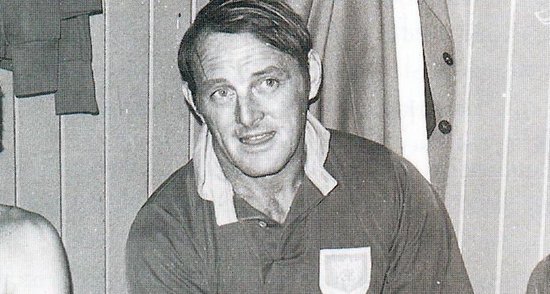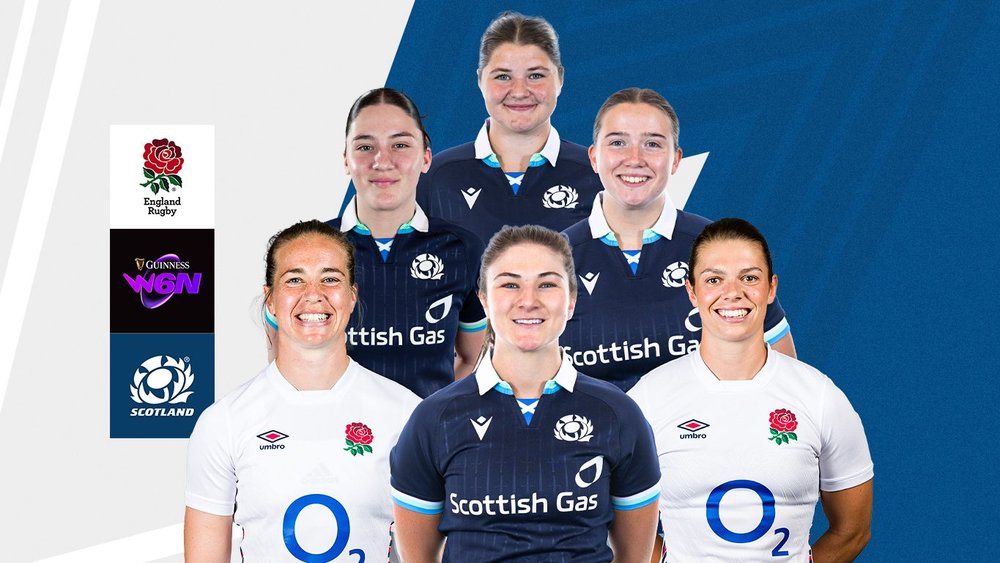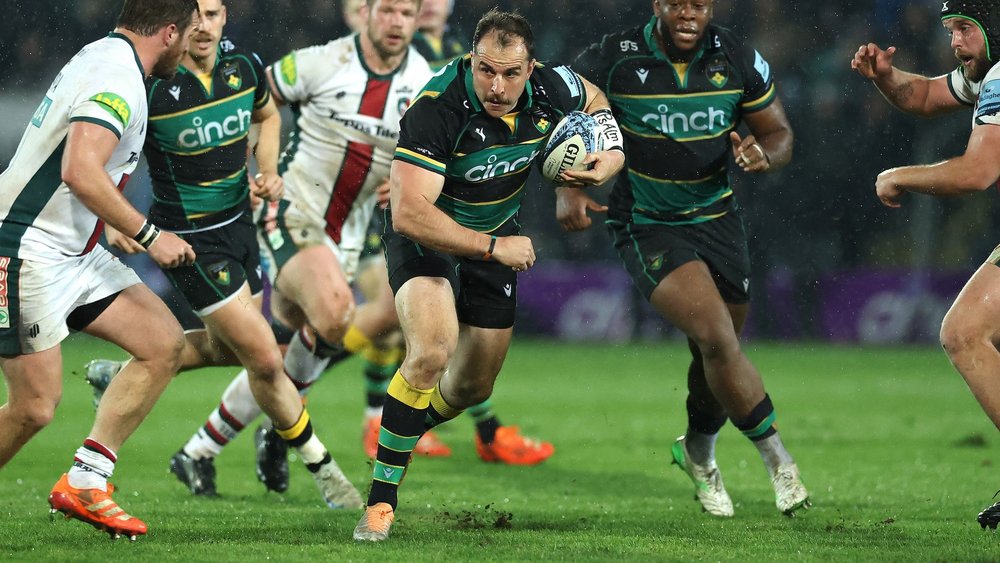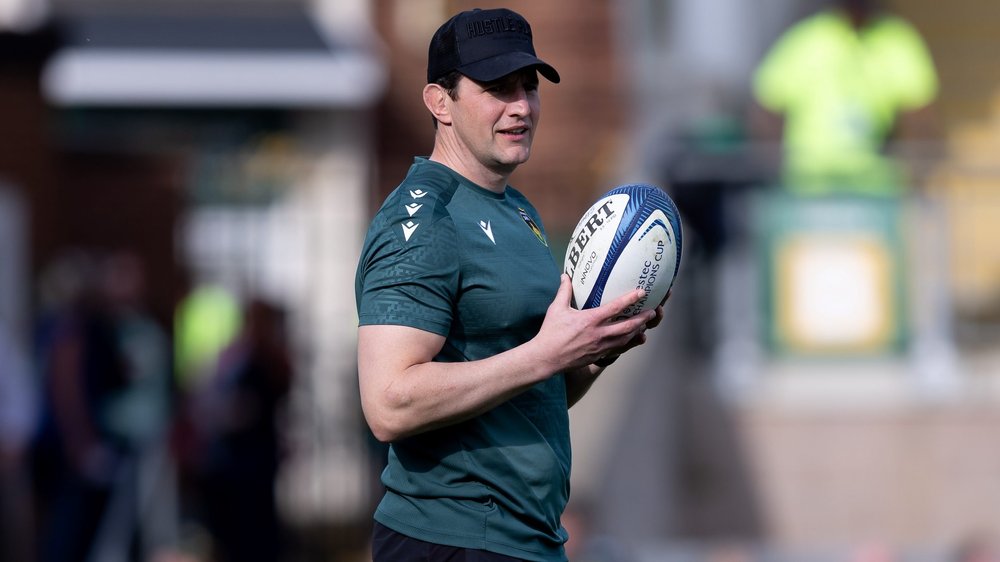Back in 2014 a post was put on the ComeOnYouSaints.com message board, calling upon the Northampton Saints management to consider Frank Sykes for the club’s Hall of Fame. As with the news of his passing earlier this week, this was followed by reply after reply of fond memories of former pupils of Northampton Grammar School and others who recalled the impact that Sykes had had both on them but also the club as a whole.
Were he to have played in almost any other era then Sykes would have been a revered name in the history of Northampton Saints.
A winger with an outstanding strike rate of 152 tries in his 235 appearances, an England international and British and Irish Lions tourist, not to mention 79 appearances for Yorkshire – a record that stands to this day – Sykes was a player whose quality shone through and who made a lasting impact on those who met him throughout his life.
However, he was part of a Saints team that included Dickie Jeeps and Jeff Butterfield, to name but two, and Sykes has been somewhat overshadowed in the history books by those two legends of Saints, England and Lions rugby.
Butterfield was then regarded as one of the best centres in the world, but even though he had encouraged Sykes to join the Saints Butterfield was not about to do the winger any favours. Indeed, Sykes was reported as saying: “Jeff, for God’s sake let me do a bit towards scoring some of the tries occasionally!”
Any tension that this comment may appear to portray would surely have been mere tongue-in-cheek superficiality, as not only did Sykes become an important part of one of the best backlines to ever wear black, green and gold, but he also had his first England caps and a place on the 1955 British and Irish Lions tour alongside his illustrious clubmates within 12 months of moving to Franklin’s Gardens.
Sykes’ most memorable years on the pitch came relatively late in his career, with him arriving in Northampton aged 26 from Huddersfield, where he had played between 1949 and 1954. Before then was a two-year stint in the British Army, representing the Combined Services (Hong Kong) as a fly half and two more years at St Paul’s College, where he had taken up rugby union for the first time, the sport not having been played at his school, Batley Grammar.
But it was the Saints that was Sykes’ sporting love. He was part of a flood of exciting talent that flowed into the Gardens in the mid-1950s, and alongside Jim Hetherington, Phil Taylor and Roger Hosen Sykes was part of a ‘club within a club’.
The quartet was inseparable, with Hetherington describing in ‘Nothing Without Labour’ how this extended into living arrangements, too.
“After being thrown out of our digs on Billing Road for misbehaviour (and unwittingly poisoning the goldfish with marmalade), Phil Taylor, Roger Hosen and I teamed up with Frank Sykes to find another place of rest,” he said.
“We found a wonderful flat above a lady hairdresser, whose brass plaque – Norah Panting – was on the front door. This was the object of much celebration but we quickly realised that we needed someone to feed the inner man.
“We placed an advertisement in the local paper calling for a housekeeper to attend to the needs of ‘Four Hungry Saints’. This produced a flood of replies and the need to interview applicants. We made the great mistake initially of putting some undue emphasis on fanciability rather than culinary prowess. The inevitable result was that we ate badly, or not at all, while one of the four ‘went out’ with the lady, who had been selected for her curves.
“It took two months to realise that we needed someone of mature years who was good with the saucepan and not so enticing. We found her – Mrs Barnes – a lady who ruled us and built a solid career as a housekeeper and adviser on life in that memorable little flat above Norah Panting.”
The famous four certainly had something of a reputation, and it was with a fellow free spirit that Sykes found his soulmate, Anne-Marie, whose Scandinavian surname Martinson brought her nickname, Marty.
The two met at a party at Marty’s flat over the road from Franklin’s Gardens in 1963, and with Sykes brought along by a friend it was love at first sight. Two years later the pair were married, and remained together for the next 52 years until Sykes passed away on May 12th.
Sykes may have had plenty of qualities as a rugby player, including once scoring seven tries in one match against Old Alleynians in 1962, but – as with his cooking with his fellow players – this was not necessarily replicated on the DIY front.
In the early-1960s he joined Butterfield, John Hyde and Martin Underwood and others in ‘helping’ past-president Ron Slinn to build a players’ bar under the old Members’ Stand.
“Frank had the job of nailing the joists,” Slinn recalled in ‘Nothing Without Labour’. “Unfortunately he nailed them just a wee bit too close and got stuck between two of them. I had to knock one out to get him down!”
Fortunately, unlike his woodwork skills, Sykes excelled in his career as a teacher. As rugby master at Northampton Grammar School he was instrumental in bringing through the next generation of Saints stars, including Bob Taylor, Bryan West (both future British and Irish Lions), Glenn Robertson, Mick Roper and Geoff Allen.
“Frank took over the school XV in my last year, following on from Roger Hosen and Phil Taylor,” Taylor says. “His influence was quite strong. He was very keen to make sure that we made the ball do the work, and encouraging us to play expansive rugby.
“I joined the Saints within a year of leaving school and was playing with Frank. He was quick and strong as well, and quite often his power would create tries. By that time he was an elder statesman in the changing room, and was very encouraging and helpful to try and make sure all of the young players achieved their best.
“He would have been a very good man in the professional era. He maintained a high level of fitness, and he had a serious attitude to the game of rugby.”
By the mid-1960s Sykes’ international playing career was over – following one final hurrah on tour with England to New Zealand and Australia that had left Sykes stunned by his selection – and he and Marty were contemplating their futures when a chance meeting occurred that would change their lives forever.
“We were at an international in 1966 and were introduced by Wales coach Ray Williams to Fritz Grunebaum in the bar,” Marty recalls. “Fritz thought that Frank was the perfect man to get rugby started in New England and asked if we’d be interested in moving. Of course Frank said ‘yes’, but we didn’t think anything more of it until two months later when Fritz secured Frank a teaching job at The Cambridge School of Weston in Massachusetts and a place as coach at Boston rugby club. We were off, baby daughter in tow, and had a fantastic eight years in New England.”
Grunebaum was president of the Boston RFU, and as among the first of a large influx of foreign-born players to usher in a golden era of Boston rugby, Sykes could be considered to be one of the founding fathers of the sport in the USA. By the time he left Boston for Phoenix in 1973 the club had increased from one adult side to six, with a further team playing on Sundays, making it the largest club in America.
“As both a player and a coach, Frank Sykes brought much to the game of rugby, not only in Boston but all over New England,” said Richard Underwood, president of the Boston Rugby Football Union in 1973. “As current president of the New England Rugby Union he continues to improve and expand rugby in America.”
Not content with his achievements in New England, Sykes moved to Arizona to seek new challenges, which he found in an independent school in Scottsdale and at Phoenix Rugby Club, a much smaller and inexperienced club compared to what he had left behind in Boston.
There was a further move in 1976 to Cate School in California, the oldest boys’ boarding school on the west coast. Rugby followed, too, and Sykes played for and coached Santa Barbara RFC until 1995.
For someone who was a larger-than-life character, what followed was certainly unfortunate at best, and tragic at worst. In March 1995 he had planned to attend an international at Twickenham and speak on American Education at the Northampton Rotary Club. Within 24 hours of arriving in the UK from Los Angeles he suffered a massive stroke that took nearly all of his mobility and all of his speech.
The spirit and fight that had been with him throughout his life remained, however, but while he succeeded to some degree in regaining his mobility his speech never returned.
This was a particular tragedy considering these comments from a former teaching colleague in 2006: “Frank’s speaking ability was admired and envied by everybody who ever heard him.
“Whether he was chatting with friends, discussing a poem or Shakespeare in the classroom, stirring the passions of his team before a big game, or delivering a graduation speech, Frank mesmerized listeners.
“Here in the States, his Yorkshire accent caught peoples’ attention, but equally impressive was his voice – rich and deep, yet capable of rising dramatically to achieve certain effects.”
After three decades in California Sykes moved north to Seattle, where he and Marty spent 12 years until he died peacefully on Friday, May 12th, 2017.
FRANK SYKES
09/12/1927-12/05/2017
Saints: 235 appearances (1954-1965), 152 tries, 456 points
England: 4 caps (1955 and 1963)
British and Irish Lions: 1955 tour to South Africa
Barbarians: 3 appearances









